How to Eat Your Way Around Malaysia

Hundreds of years of maritime trade, a rich Indigenous heritage and regional migration have cross-pollinated in Malaysia, where the national cuisine is as diverse as its people. The best way to experience this South-East Asian country is by eating – whether that’s slurping Penang’s finest laksa, sampling the wild-growing fruits of Borneo’s rainforests or tasting the famed blue rice of the east coast.
Hit the hawker markets in Kuala Lumpur
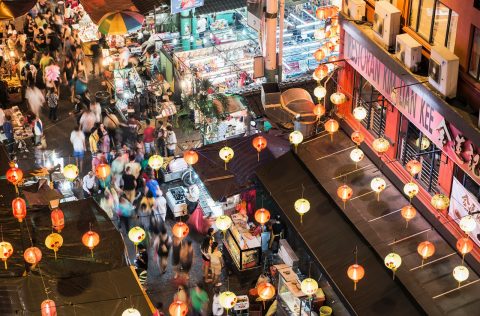
From above, the minarets, skyscrapers and spires that make up the city’s skyline look serene; on the ground, it’s all noise, action and aromas.
To explore the Malaysian capital’s multilayered culinary culture, visit Chinatown’s Petaling Street, the laneways of Little India and the renowned food strip Jalan Alor, where the rows of hawker stalls offer everything from spicy skewers to tangy coconut soups.
Must-try dishes in Kuala Lumpur include nasi lemak (fatty rice), a pile of fragrant coconut rice topped with sambal (chilli paste), fried anchovies, boiled egg, cucumber and peanuts, all neatly wrapped in a banana leaf. Join locals who appreciate the sweet and spicy sambal at Nasi Lemak Wanjo (8, Jalan Raja Muda Musa, Kampung Baru).
Another favourite is char kway teow – you’ll notice the dish’s tempting, smoky scent everywhere in Kuala Lumpur. Prawns, lap cheong sausage, fishcakes, bean sprouts, egg and garlic chives are wok-tossed with noodles to charred perfection. Order your CKT at Secret Penang Café (50G, Jalan SL 1/3, Bandar Sungai Long), where it comes with an optional duck egg.
Need help getting started? Try a tasting tour on two wheels with Vespalicious and you’ll venture off the beaten track to some of KL’s best dining spots.
Sample Michelin-starred restaurants in George Town
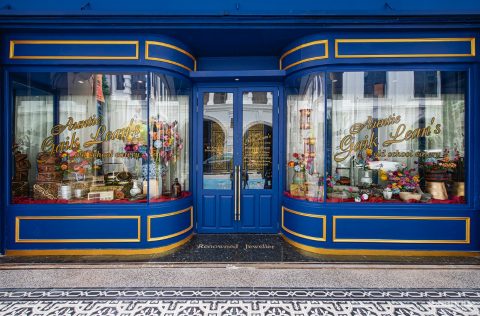
With humble stalls and colourful markets at every turn, George Town’s street-food scene is world class. Step off the street, though, and you’ll find some of Malaysia’s best restaurants. In Penang’s capital, Michelin-starred Auntie Gaik Lean’s Old School Eatery is permanently packed, thanks to affordable nyonya dishes created by 70-year-old chef Gaik Lean. Order the yellow curry chicken with homemade coconut milk or sambal brinjal, a beloved eggplant dish.
At Au Jardin, Michelin-rated French-inspired dishes executed with Malaysian produce are served inside a bus depot turned art space. The remit here is “la cuisine naturelle”, which means the kitchen is dedicated to unlocking the full flavour of each ingredient. The menu includes elegant morsels such as cognac and hay-aged duck with braised winter melon and smoked cultivated Penang mussels with scorched stink beans and green curry.
Unearth a hidden gem in charming Ipoh
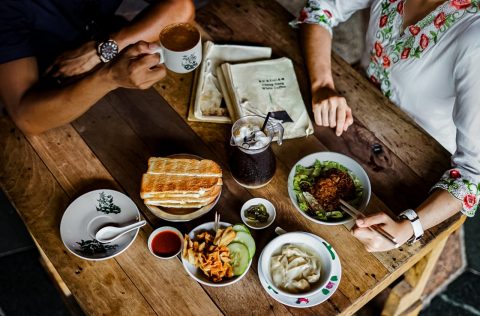
Nestled in the limestone hills of Malaysia’s west coast, about halfway between Kuala Lumpur and Penang, Ipoh was once gilded with the spoils of its prosperous tin mines. But it fell on hard times when the industry collapsed in the 1980s and downtown Ipoh lost its lustre. Now, colonial shophouses, quaint laneways and a charming riverfront are being revived by artists, makers and returnees.
Fuelling the comeback is a dining scene shaped by the region’s bounty. In-the-know food pilgrims are setting their sights on Ipoh for dishes such as tauge ayam (juicy chicken with bean sprouts) – try it at local institution Restoran Tauge Ayam Lou Wong (49, Jalan Yau Tet Shin, Taman Jubilee). Or head to Restoran Thean Chun (73, Jalan Bandar Timah) for kai see hor fun, a rich chicken-and-prawn soup with slippery rice noodles.
The city is also known for its Ipoh white coffee. The beans are slowly roasted in margarine, creating a nutty caramel flavour with a hint of smokiness. Prepared with frothy evaporated milk, this sweet drink is the perfect match for kaya (coconut jam) toast with boiled eggs – which is how it’s served at Sin Yoon Loong, an old-school kopitiam (coffee shop).
Relish the jungle flavours of Borneo
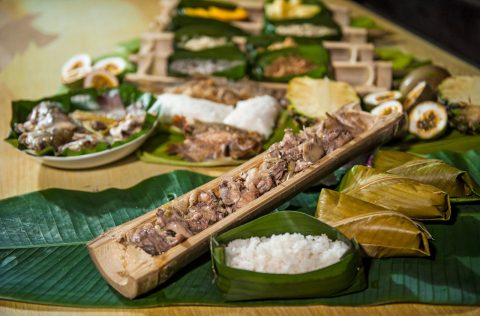
The distinctive cuisine of the Dayak people of Borneo draws from the rainforest that sprawls over much of the island. The Malaysian states of Sabah and Sarawak are rich sources of jungle-grown produce, including durian flowers, gula melaka (palm sugar) and wild ginger.
Kuching secured UNESCO Creative City of Gastronomy status in 2021 for its biodiversity and Indigenous heritage, and top Bornean chefs are focusing on traditional methods of foraging, smoking and fermenting. Learn about the local cultures at Kuching’s living museum, Sarawak Cultural Village, before sampling authentic dishes such as sautéed bamboo shoots with banana leaf at the onsite Restaurant Budaya.
The Native Cafe at Hotel N°5 in Kota Kinabalu serves ambuyat, which is made from the trunk of the sago palm, and butod (sago grubs), a delicacy of the region. At Lepau Restaurant in Kuching, an all-female team of chefs offers excellent pansuh, a spiced chicken mix that’s stuffed into a bamboo stalk and cooked over an open fire.
Planning a trip to Malaysia? Get a taste of what awaits at malaysia.travel
Find your favourite laksa
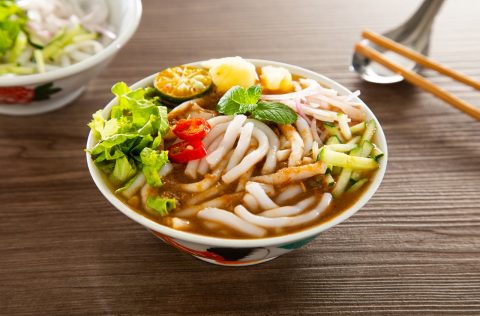
A true melting-pot dish that is believed to have evolved when Chinese traders and sailors settled along the trade channels of South-East Asia around the 16th century, laksa may be Malaysia’s best-known export but the nuanced flavours vary from state to state.
North-western Penang is known for assam laksa, made with a tamarind-sour fish broth. Recipes are passed down through the generations and ingredients vary greatly. At Penang Road Famous Laksa (5 Lebuh Keng Kwee, George Town), the stock is made with sardines and served with spring rolls for dipping.
The late chef Anthony Bourdain called Sarawak laksa – shrimp-based broth topped with bean sprouts, coriander, prawns, chicken and slivers of omelette – the “breakfast of the gods”. Do as he did and order yours at Choon Hui Cafe (34, Jalan Ban Hock) in Kuching.
Melaka, in the country’s south-west, plates up two versions of the beloved dish: nyonya assam, a tangy soup with thick noodles; and baba laksa, which is creamier and features thinner noodles. Head to Jonker88 (88, Jalan Hang Jebat) to sample excellent versions of both.
At the southern end of the Malaysian Peninsula, Johor has an unusual take on the dish – spaghetti topped with an umami-laden sauce made from ground fish, coconut milk, dried shrimp, galangal and lemongrass. Try it at the village-like ZZ Sup Tulang (20, Jalan Petri 5/1, Kampung Bahru).
Savour unique rice dishes
Rice, or nasi, is a staple food in Malaysia but there are so many permutations that it’s hard to believe it’s all the same grain. Here, rice isn’t a side – it’s the main event. Two intriguing creations can be found on mainland Malaysia’s east coast. Nasi dagang is made with the purplish-red rice native to the region, which is steamed with coconut milk and served alongside creamy fish curry.
Nasi kerabu is unmistakably blue – the hue comes from butterfly pea flowers – and the rice is tossed with grated fresh coconut, shredded cabbage, long beans, bean sprouts and fresh herbs, while sides include sambal, salted egg and fermented fish paste. You can try both at Lieniey Nasi Kerabu Tumis – the modest roadside stall in Kota Bharu, Kelantan’s capital, almost always has a queue.



